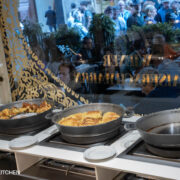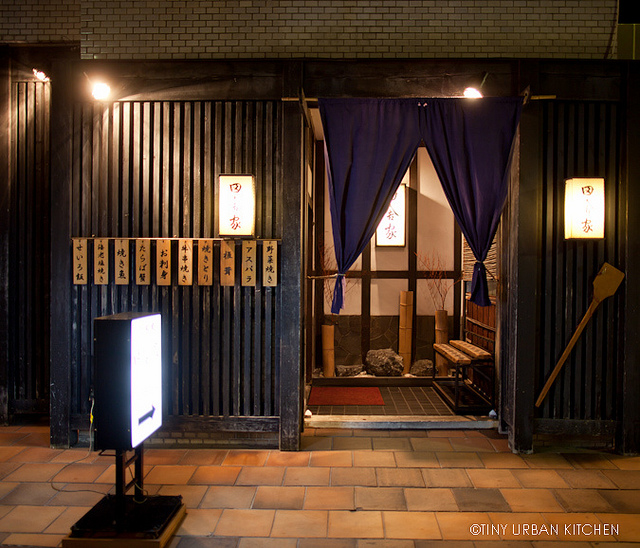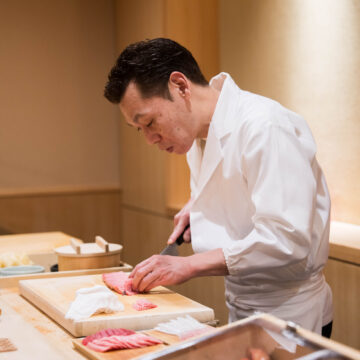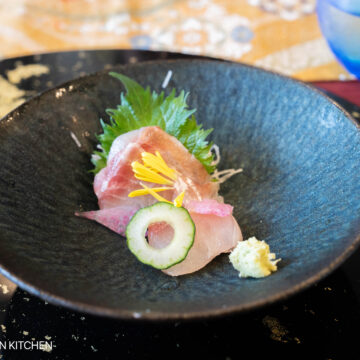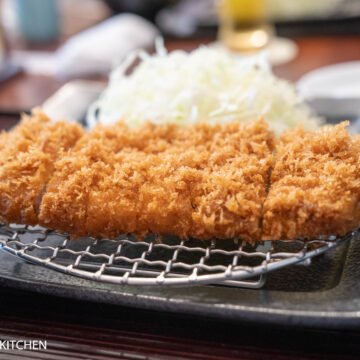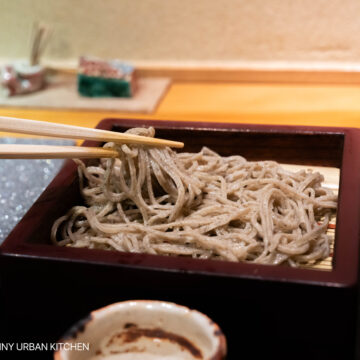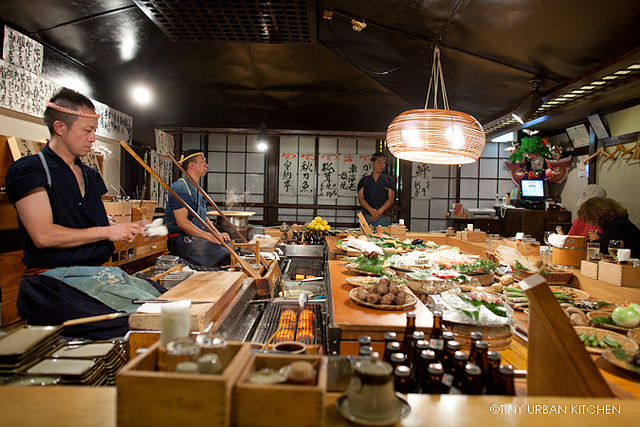
This is part 5 of my latest travel series: Post Quake Japan. Other posts in this series: Kago, Daisan Harumi, Tempura Kondo, and Sushi Mitani.
One thing I love about visiting Japan is seeing (and trying!) all the unique aspects of the cuisine that I don't get to appreciate in the States.
Most Japanese restaurants in America serve a generalized sort of conglomeration of all things Japanese, sort of like a "greatest hits." Sure, you may have a few dedicated sushi bars and ramen joints. By and large however, most Japanese restaurants in the US have diverse menus that include noodle soups, tonkatsu, sushi (and even Korean food sometimes!) all under one roof.
In past trips to Japan, I've had the luxury of experiencing all sorts of dedicated, specialty restaurants, like shabu shabu, tonkatsu places, countless different sushi bars, ramen joints, dedicated tempura bars, as well as curry houses.
I really think I've barely scratched the surface when it comes to experiencing all that this amazing country has to offer.
This past trip to Japan, I encountered yet another, new style of dining I'd never seen before.
Welcome to Inakaya, a robatayaki located in Roppongi, the most gaijin (foreigner) friendly part of town.
What is robatayaki?
Many of you have probably seen teppanyaki restaurants around in the US. These are the ones where a chef cooks your meal tableside on a big, flat cooking serface (teppan literally means metal board). At the ones I’ve visited, the cooking demonstration is typically accompanied by light theatrics, such as fancy chopping with lots ingredients being thrown around (and caught!).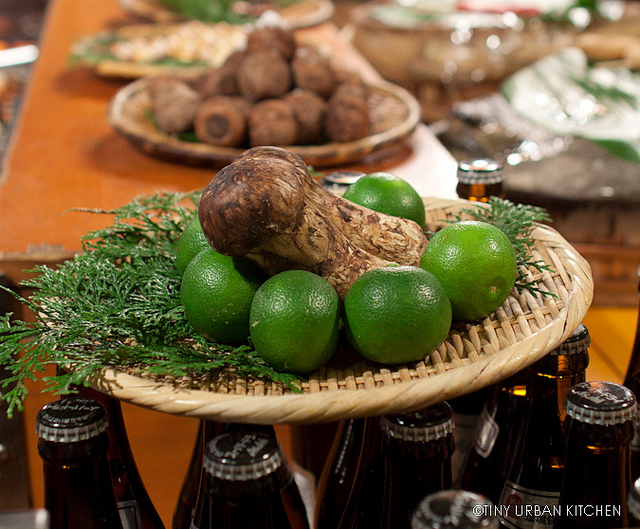
Robatayaki is completely different. In this style of dining, you have two chefs kneeling on stage in front a huge fire pit. You choose your fresh ingredients, and they roast it over the open flames for you. The ingredients are simple yet high quality, and thus the resulting dishes are really, really good.
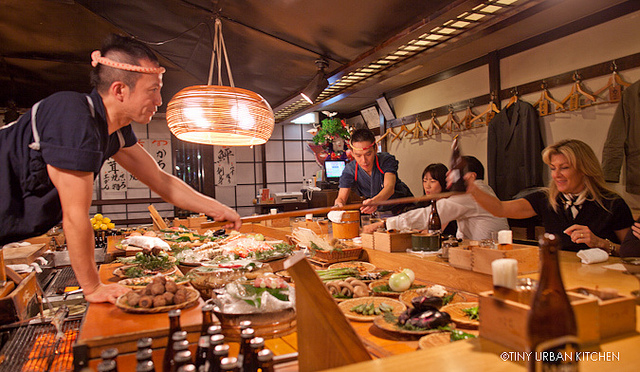
And then there's the really unique atmosphere.
The moment you enter, every single worker at the restaurant yells out “Irrashaimase!”
Though that may be normal at most Japanese restaurants, it doesn't stop there. Soon afterward, a customer orders a beer. Within moments, the server places the cold bottle on a long paddle stick (reminds me of a narrow pizza peel!), reaches across the table to her, and shouts,
“The lady just ordered a beer!”
This is followed immediately by a chorus of voices from the entire staff, in unison,
“The lady just ordered a beer!”
Of course, this is all in Japanese, which makes it sound all the more comical. It was funny to watch, and made the environment festive and fun.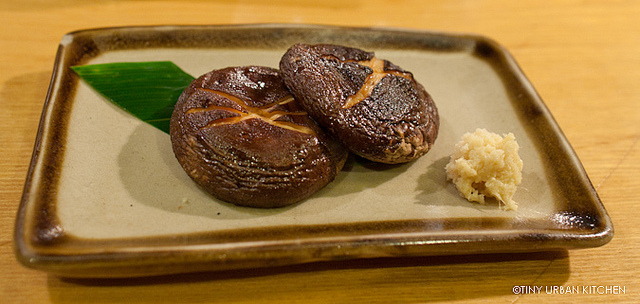
Fresh shitake mushrooms
We started with some fantastic vegetables. Nothing was really seasoned heavily – at most a sprinkling of sea salt, maybe some soy sauce, and a brush of vegetable oil. However, the flavors were incredible. The sweet, natural umami of the shitake mushrooms were significantly enhanced by the grilling.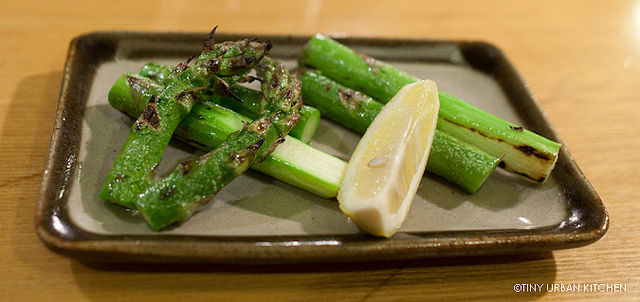
These gorgeous asparagus were cooked in nothing but a bit of oil and salt, but they were sweet, crispy, and perfectly charred.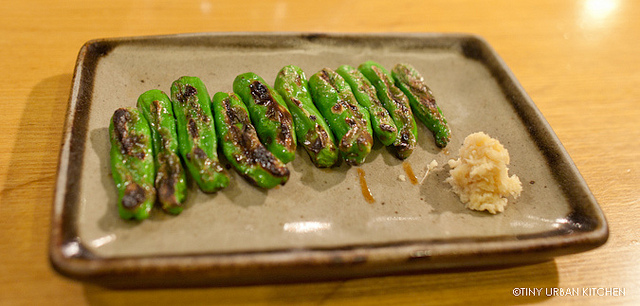 I was really impressed at how good simple fire-grilled vegetables could taste. Above, some little Japanese peppers.
I was really impressed at how good simple fire-grilled vegetables could taste. Above, some little Japanese peppers.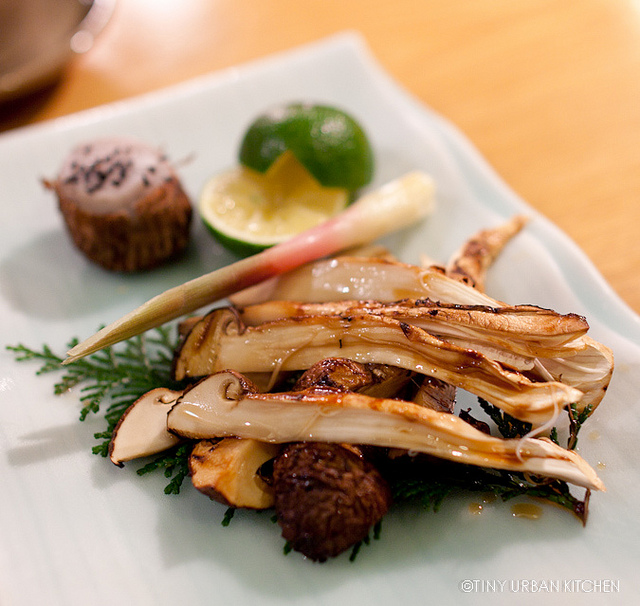
I was ecstatic to see my beloved matsutake mushrooms again, this time simply roasted with salt. Beautiful. 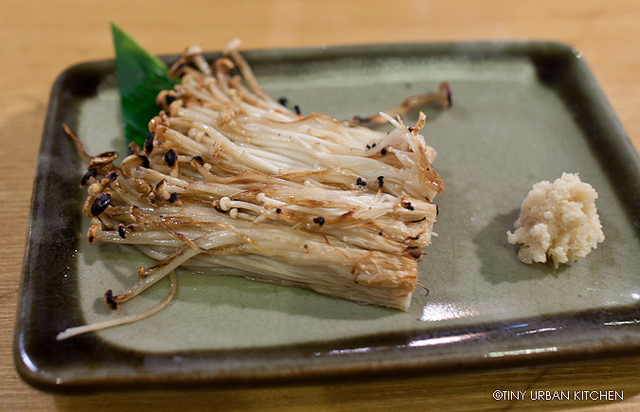
Enoki mushrooms, another favorite, were also wonderful. After gorging myself meal after meal in Japan, this meal felt downright healthy and cleansing, yet still really delicious!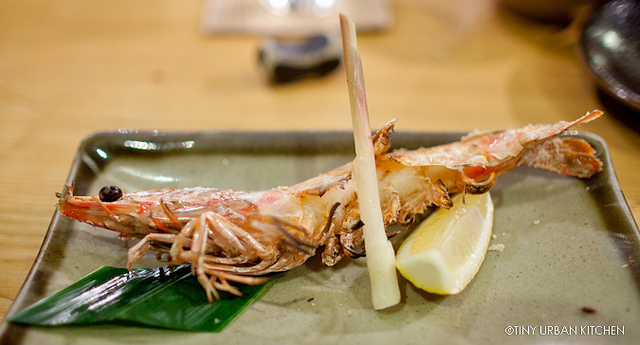
The fire-roasted seafood was similarly fresh and delicious. These large prawns, cooked in their shells, were sweet and juicy and retained a ton of flavor. 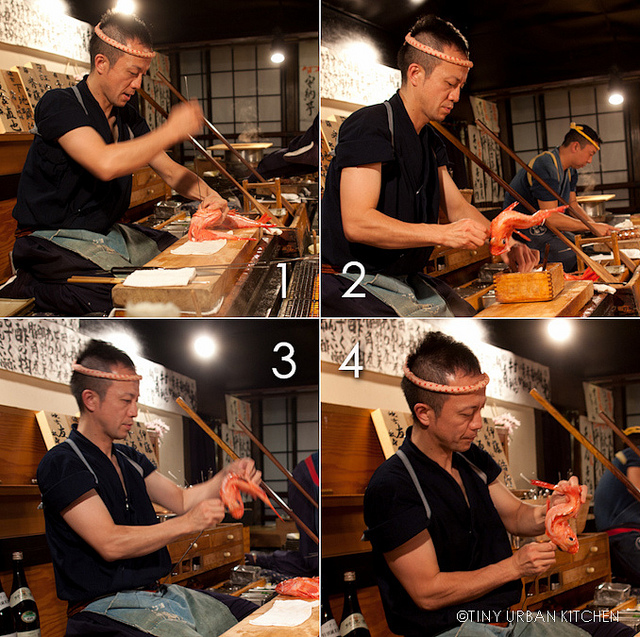
The pinnacle of the meal, however, was the roasted red snapper, which took quite a long time to cook but was totally worth the wait. Above you can see the chef carefully spearing the fish onto a long, metal skewer.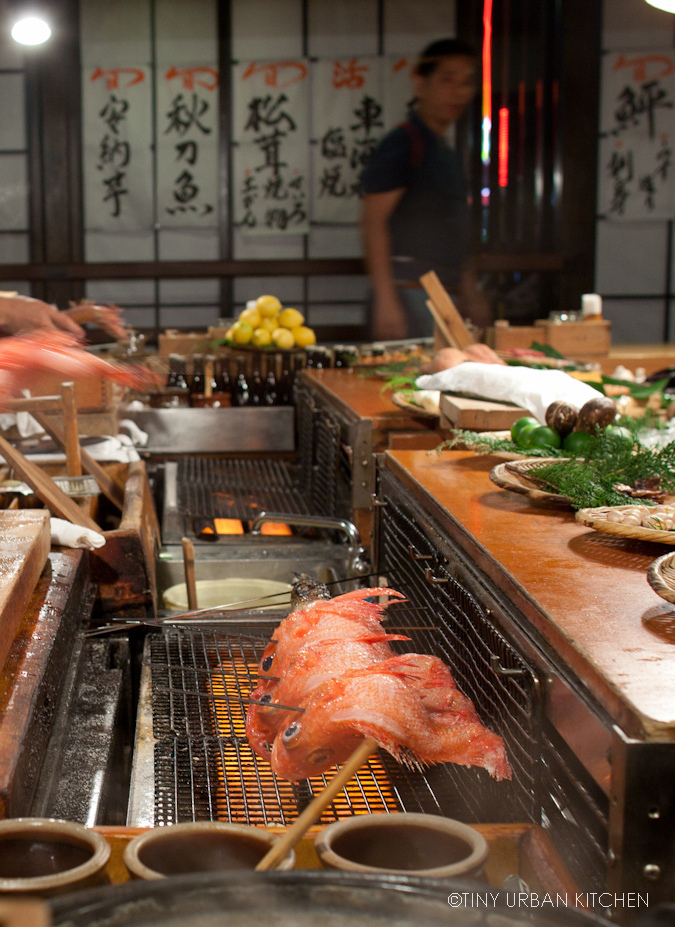
The fish probably sat on top of the fire for at least 20 minutes, slowly developing a gorgeous, salted crust. Every so often, the chefs would rotate the fish.
The final product was incredible. Crispy and salty on the outside, juicy, moist, and sweet on the inside. This was surprisingly simple yet really superb. 
We ended the meal with some refreshing grapes. Bryan actually said they were the sweetest purple grapes he'd ever had (contrasting with the sour ones with pits we usually have in the the US!)
Concluding Thoughts
This place is definitely well-known. It’s written about in multiple guide books and also happens to be located in a very foreigner friendly part of Tokyo (nowhere else do I ever hear so much English spoken on the streets!). While we were there, we noticed only two Japanese diners in the restaurant. Everyone else was a foreigner, with English being the predominantly spoken language.
Some might think it's a bit staged and theatrical.
But you know what? It's fun.
And there are still a lot of reasons to visit. First of all (most importantly!), the food is absolutely delicious. They definitely use super high quality seafood and vegetables. Furthermore, it’s really fun to just sit back, relax, and watch these guys roast anything you want on that awesome grill. The place is foreigner-friendly, so you won’t have any trouble speaking English with the staff. I think it's great for a celebration, a family get-together, or a dinner with out-of-town special guests.
One thing to note - a meal here is not cheap. Although the a la carte prices aren't too bad, the bill can add up quickly. I think our meal came out to somewhere in the $50-$75 USD range per person, but I've read that you can expect to spend up to $150 USD for dinner.
All Rights Reserved












